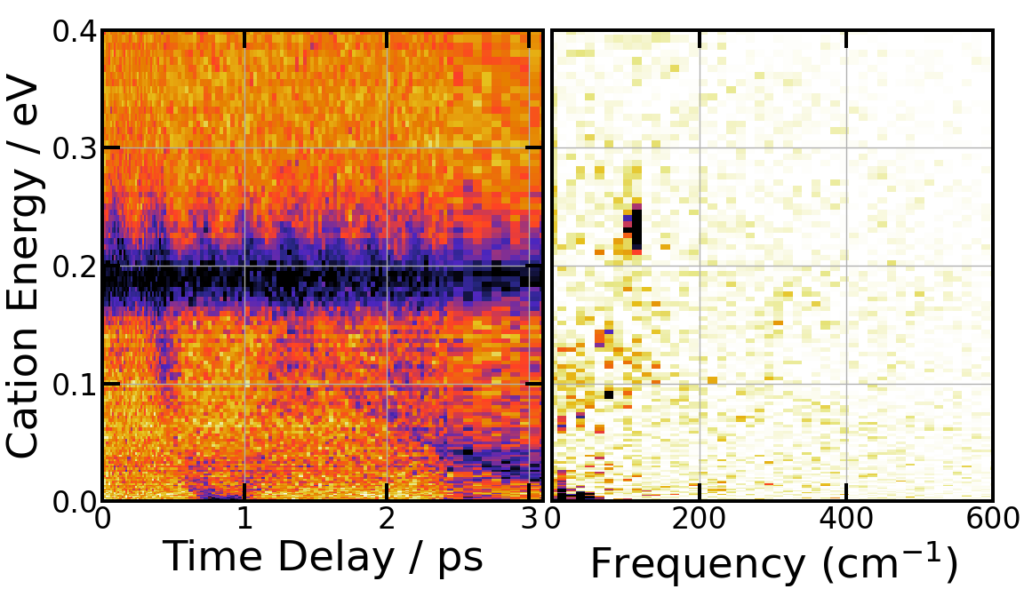Research topics
The DIRAM group is composed of 8 CNRS researchers and professors, 1 postdoc and 3 PhD students. Our research focuses on the dynamics of light-matter interaction using both experimental and theoretical approaches.
We are particularly interested in the dynamics of light-induced fundamental processes (excitation, ionization, dissociation, relaxation, energy exchanges) in isolated systems usually in the gas phase: atoms, ions, molecules, small clusters and aggregates, and nanoparticles.
Our research aims at understanding (i) the individual dynamics of the system, (ii) the effects of an environment on the dynamics or (iii) collective dynamical behaviours.
The dynamics are observed on timescales ranging from tens of attoseconds (10 as = 10 x 10-18 s), that is the timescale of electron dynamics, to hundreds of picoseconds (100 ps = 100 x 10-12 s) covering nuclear dynamics in large atomic and molecular stuctures.
We typically use radiation sources from the infrared to VUV-soft X-rays, in various interaction regimes: single photon absorption in the valence (UV-visible) or core-excited (VUV, soft X-ray) shells, or multiphotonic absorption from an ultrashort IR pulse (~35 fs to ~3ps) producing single or multiple ionization or even production of a plasma. Some of the light sources that we use are available at specific facilities where we regularly have beamtimes (SOLEIL Synchrotron, ATTOLab, LASERIX, FERMI-Elettra, SwissFEL, European XFEL, LCLS…).
The dynamics are characterized either with spectroscopic measurements (linewidth, action spectra, photoelectron spectra measurements), or with time-resolved experiments using the pump-probe method, or using numerical simulations (quantum nuclear and electron dynamics). We have a strong interest in quantum phenomena, possibly controlled with intense laser fields, such as coherence and interference processes, quantum resonances, quantum tunnelling, Bose-Einstein condensates, etc…
The group is engaged in numerous collaborations in France and abroad, in multiple projects at the Université Paris-Saclay level (ATTOLab, QUANTUM), in scientific networks in France (GDR UP, GDR EMIE, GDR XFEL, …) and in Europe (Laserlab-Europe…).
The DIRAM group in June 2024
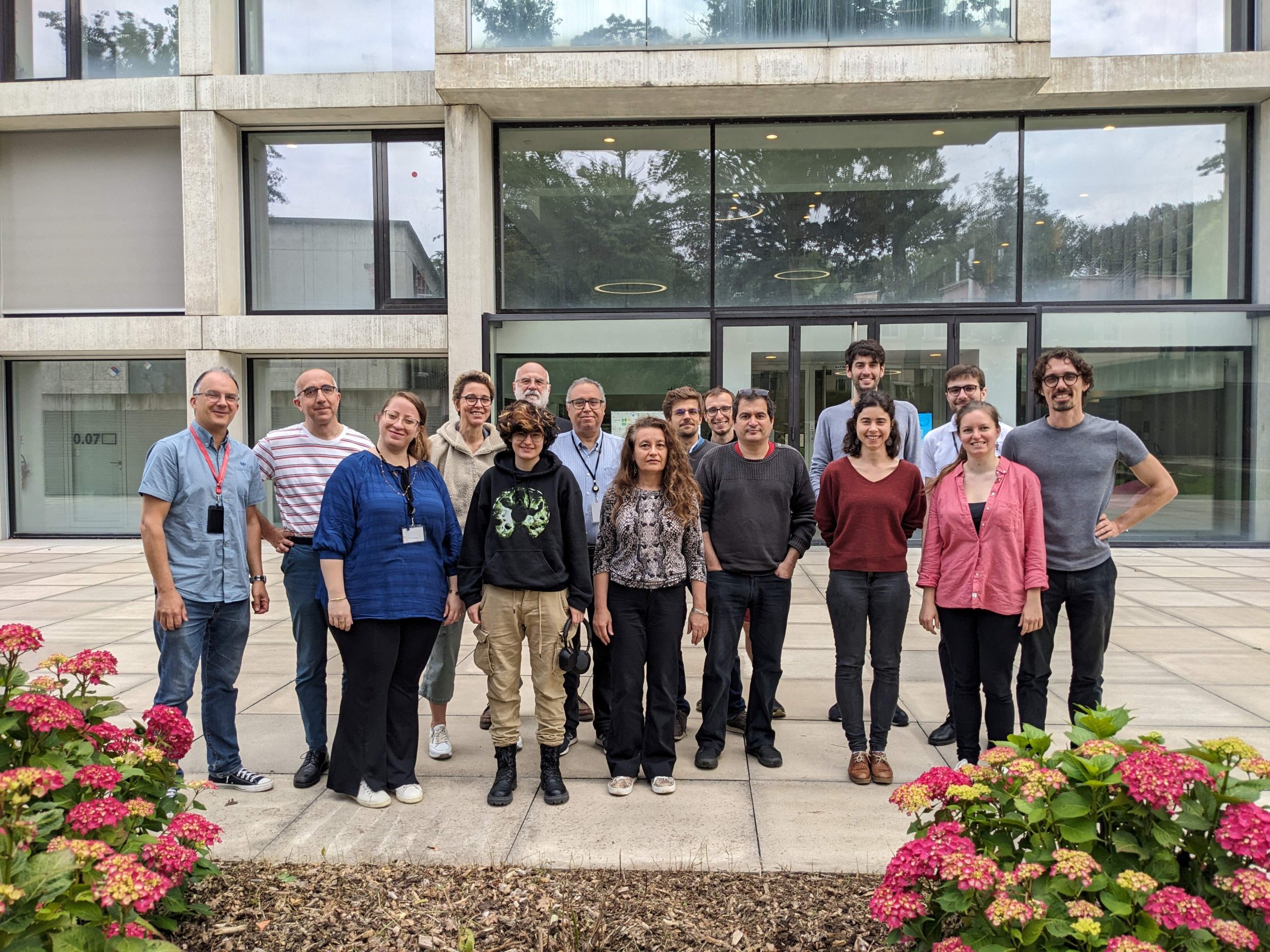
Lionel Poisson, Eric Charron, Raja Chamakhi (Invited, Univ. Tunis), Ségolène Guilbaud, Denis Cubaynes, Oriane Shviro, Mourad Telmini (Invited, Univ. Tunis), Raluca Cireasa, Baptiste Zarié, Timothé Estampes, Fabien Gatti, Gabriele Crippa, Audrey Scognamiglio, Eliot Morato, Lou Barreau, Constant Schouder – Danielle Dowek
News
-
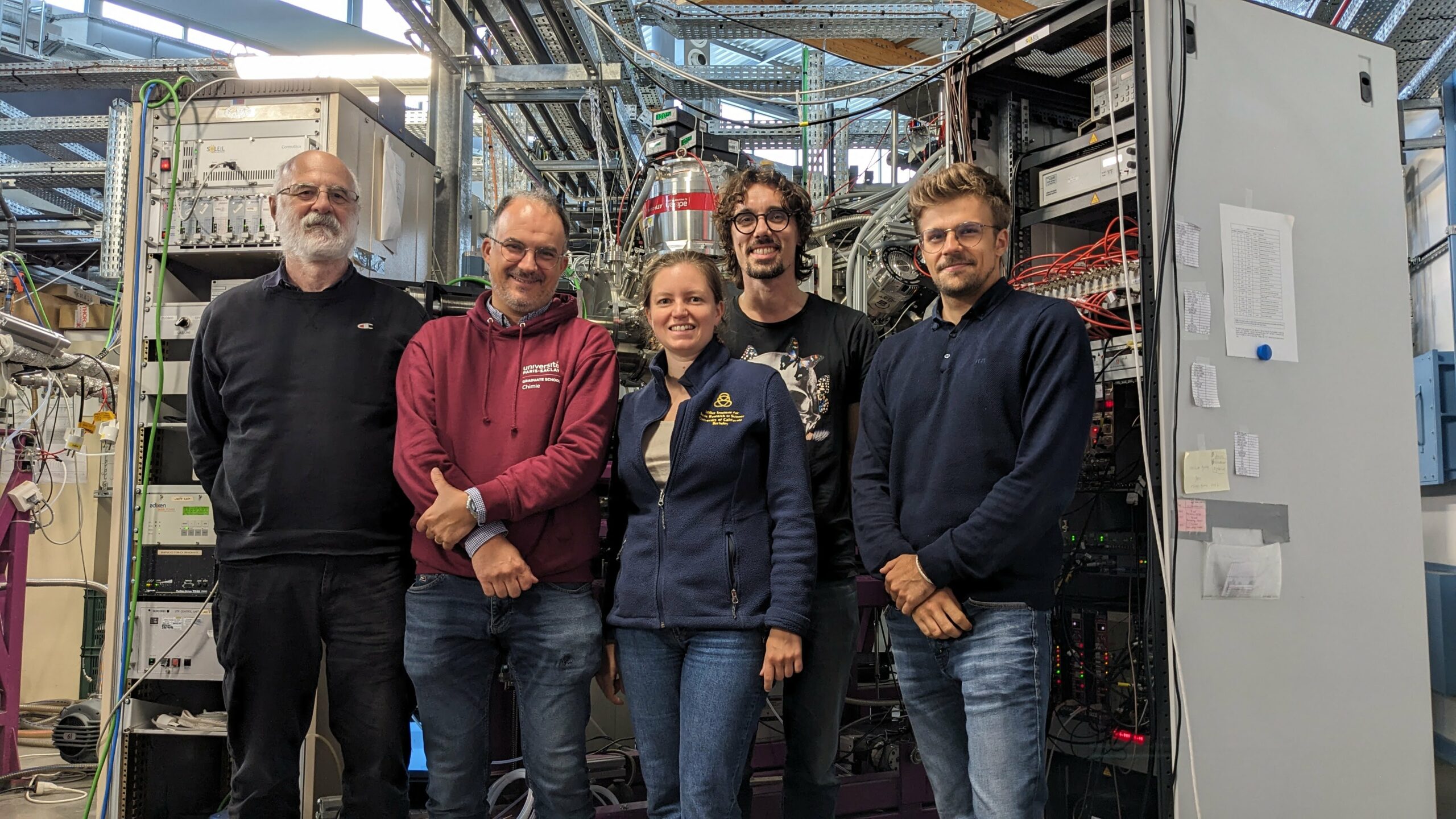
05/09/2025
Baptiste, Constant, Denis, Lionel, Lou, Ségolène and Audrey are at the SOLEIL synchrotron for a photoionization experiment on the DESIRS beamline.
-
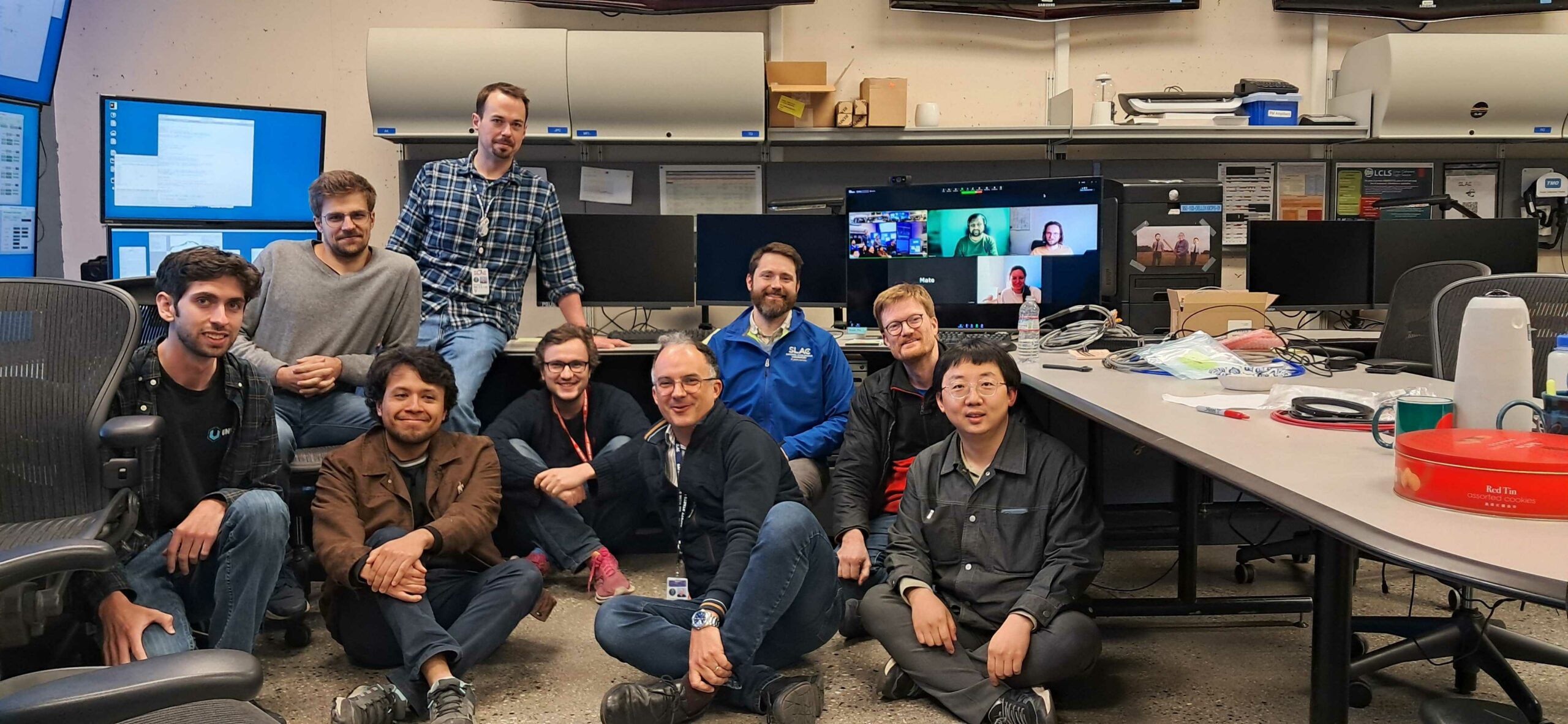
25/04/2025
Baptiste, Constant and Lionel are at LCLS for a beamtime ! https://vimeo.com/1099837190/615d46dce9 Lou participates remotely from Orsay.
-
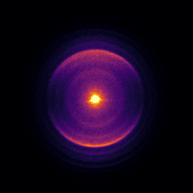
17/03/2025
Ilyas Benjabbar joins the group for his Master 2 internship.
-
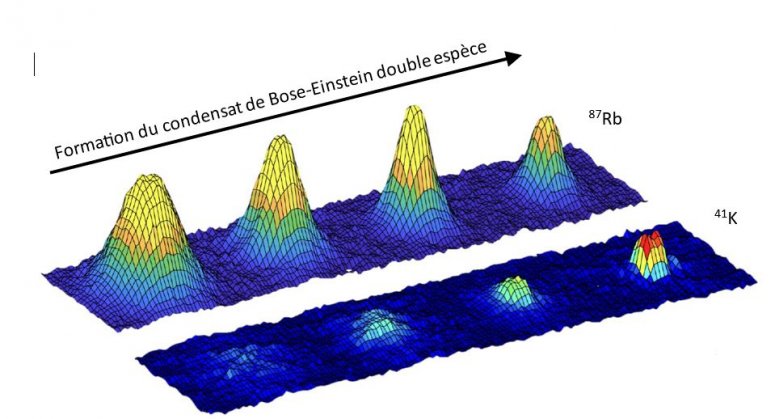
10/03/2025
Claudia Puertas Gonzales joins the group for her Master 2 internship.
Internships, PhD and Post-doc offers
The Physics Graduate School of Université Paris-Saclay has been awarded funding by the European Union under the Marie Skłodowska Curie COFUND action, call 2024.
Subject to the signature of the grant agreement, UPSaclay STAR φ will allow the recruitment of up to 41 international postdoctoral researchers over two calls, for 24-month research projects in a wide range of research areas in Physics.
2025 call is closed, but stay tuned for the 2026 call !
Eligibility
On the closing date for applications, applicants must meet the following conditions
- Have been awarded a doctoral degree, or have evidence of having successfully defended their doctoral thesis without having been formally awarded the degree yet.
- Have published their research in an international peer-reviewed journal.
- Applicants must not have resided or carried out their main activity in France for more than 12 months during the 3 years preceding the deadline for applications.
The specific situation of applicants who may have experienced career interruptions due to parental leave or prolonged illness will be taken into account in the evaluation of the project.
Applicants are expected to propose a post-doctoral research project with freedom of choice in its specifics, as long as it is in line with one or more of the main research areas of the programme.
More information : https://www.cofund-physics.universite-paris-saclay.fr/
Contact us to discuss your application !
Dynamiques de relaxation ultrarapides des azaborines observées par spectroscopie de photo-ionisation femtoseconde
Dans les molécules aromatiques, le remplacement de deux atomes de carbone par un atome de bore et un atome d’azote conduit à une molécule avec un nombre identique d’électrons et une structure similaire (on parle d’isostères CC/BN). En revanche, les propriétés optiques et
électroniques se trouvent fortement modifiées [1] par l’apparition d’un moment dipolaire non nul, ce qui rend ce type de composés très intéressants pour les applications dans les matériaux semiconducteurs organiques. Il a par exemple été suggéré que les isostères BN des hydrocarbures polycycliques aromatiques pourraient faciliter la fission de singulet, un processus supposé augmenter l’efficacité des cellules photovoltaïques.
La spectroscopie et la photophysique des hydrocarbures aromatiques est étudiée depuis de nombreuses années, mais très peu de littérature existe sur leurs isostères BN dont la synthèse n’a été développée que récemment [2]. Dans ce stage, nous proposons d’étudier la photochimie, la photophysique et la dynamique de photodissociation d’isostères BN
d’hydrocarbures aromatiques, tels que la di-tert-butyl-1,4-azaborine (Figure 1), en phase gazeuse. Les échantillons d’azaborine, synthétisés par des collaborateurs de l’université de Würzburg (Allemagne), seront vaporisés par chauffage et photoexcités par une impulsion laser femtoseconde dans l’UV. La di-tert-butyl-1,4-azaborine présente une large bande d’absorption autour de 260 nm que des calculs de chimie quantique attribuent à une transition S0 -> S2. La dynamique de relaxation de cet état sera sondée par spectroscopie de photo-ionisation résolue en temps utilisant la technique pompe-sonde [3]. L’impulsion laser de sonde sera à 400 nm, à 800 nm ou bien 62 nm (20 eV) produite par génération d’harmoniques d’ordre élevé. La spectroscopie de photo-ionisation est une méthode idéale pour sonder les dynamiques de relaxation ultra-rapides d’états excités, car l’ionisation d’états transitoires ou finaux d’énergies différentes produit des photoélectrons d’énergies cinétiques distinctes. De plus, aucune transition n’est interdite par des règles de sélection. Ainsi, la dynamique de relaxation complète de l’azaborine après excitation dans l’UV pourra être observée pour la première fois, aux échelles de temps femtoseconde et picoseconde.
Cette étude se situe dans le cadre plus large d’un projet collaboratif Franco-Allemand (ANR-DFG) visant à élucider les dynamiques photo-induites dans les petites molécules aromatiques grâce à la spectroscopie de photo-ionisation. Le stage pourra être suivi d’une thèse en cotutelle avec l’Université de Würzburg (financement acquis).
[1] F. Sturm et al., Phys. Chem. Chem. Phys. 26, 7363-7370 (2024).
[2] H. Braunschweig et al., Angew. Chem. Int. Ed. 51, 10034 –10037 (2012).
[3] J.-M. Mestdagh, L. Barreau, L. Poisson, Phys. Chem. Chem. Phys. 26, 11516-11530 (2024)
Time-resolved photoionization of atoms and molecules embedded in superfluid helium nanodroplets
Helium nanodroplets (HeDs) [1,2] are intriguing physical objects with singular properties that make them unique among other rare gas matrices. Indeed, they have a very low temperature, 0.37K. At this temperature, the 4He is in a superfluid state (type II) and therefore exhibits exotic properties such as gigantic heat conductivity and negligible viscosity. Moreover, thanks to its electronic structure, the 4He atom is the most inert of all atoms with the highest ionization energy in the valence shell among neutral species. In fact, it is transparent to wavelengths longer than 62.56 nm. In addition to their own interests, one of their main advantages is their ability to capture various species from atoms to proteins. This is due to the large range of droplet sizes that can be achieved depending on the conditions of generation. The doped species cools down to the temperature of the aggregate, which usually infers that it has reached its ground vibrational state through the evaporation of 4He atoms. If multiple species are doped, they can form cold and stable oligomers that cannot usually be studied in the gas phase by other means.
Recently, a HeD machine has been upgraded at ISMO, and first tests showed that it was possible to control the generation of HeDs. We expect to achieve a doping scheme by implementing pick-up cells and ovens in the coming months. We propose here to get actively involved in the design and the development of the experimental setup. One of the main objectives is the construction of a PhotoIon-PhotoElectron in Coincidence (PEPICO)[3,4] spectrometer for photoionization spectroscopy. This state-of-the-art instrument will be based on Velocity Map Imaging [5] which permits to measure both the energy and the angular distribution of charged particles.
By measuring both the electron and the ion, PEPICO spectrometers permit to get a complete picture of the photoionization process. The electron gives information on the initial state of the ionized species while the ion indicates its final state, after relaxation (break-up/isomerization/…). By using coincidence and covariance analysis, it is possible to identify the correlation regions over each observable.
In the long term, the final goal of the research project is to study the reaction dynamics of doped species in HeDs by using ultrashort laser pulses in the femtosecond range (1 fs = 10-15 s) with tunable excitation radiation (240-800nm). In particular, we will rely on a pump-probe scheme to follow in real time the diving of an alkali ion (Na+) inside the HeD6 and its reaction with benzene-like molecules. This class of molecules allows to play with electrostatic properties, such as the dipole and quadrupole, by changing the group attached to it. We will investigate the evolution of the diving dynamics and the structure of the formed ionic complex and aim at developing phenomenological models to unravel the role of the solvent in the reaction.
[1] J. P. Toennies et A. F. Vilesov, Superfluid Helium Droplets: A Uniquely Cold Nanomatrix for Molecules and Molecular Complexes Angew. Chem. Int. Ed. 43 (2004), doi: 10.1002/anie.200300611.
[2] A. Slenczka et J. P. Toennies, Éd., Molecules in Superfluid Helium Nanodroplets: Spectroscopy, Structure, and Dynamics, 145. in Topics in Applied Physics, vol. 145. Springer International Publishing, (2022). doi: 10.1007/978-3-030-94896-2.
[3] G. A. Garcia, H. Soldi-Lose, et L. Nahon, A versatile electron-ion coincidence spectrometer for photoelectron momentum imaging and threshold spectroscopy on mass selected ions using synchrotron radiation Review of Scientific Instruments 80 (2009), doi: 10.1063/1.3079331.
[4] B. Bastian, J. D. Asmussen, L. Ben Ltaief, A. Czasch, N. C. Jones, S. V. Hoffmann, H. B. Pedersen, et M. Mudrich, A new endstation for extreme-ultraviolet spectroscopy of free clusters and nanodroplets Review of Scientific Instruments 93 (2022), doi: 10.1063/5.0094430.
[5] A. T. J. B. Eppink et D. H. Parker, Velocity map imaging of ions and electrons using electrostatic lenses: Application in photoelectron and photofragment ion imaging of molecular oxygen Review of Scientific Instruments 68 (1997), doi: 10.1063/1.1148310.
[6] S. H. Albrechtsen, C. A. Schouder, A. Viñas Muñoz, J. K. Christensen, C. Engelbrecht Petersen, M. Pi, M. Barranco, et H. Stapelfeldt, Observing the primary steps of ion solvation in helium droplets Nature 623 (2023), doi: 10.1038/s41586-023-06593-5.
